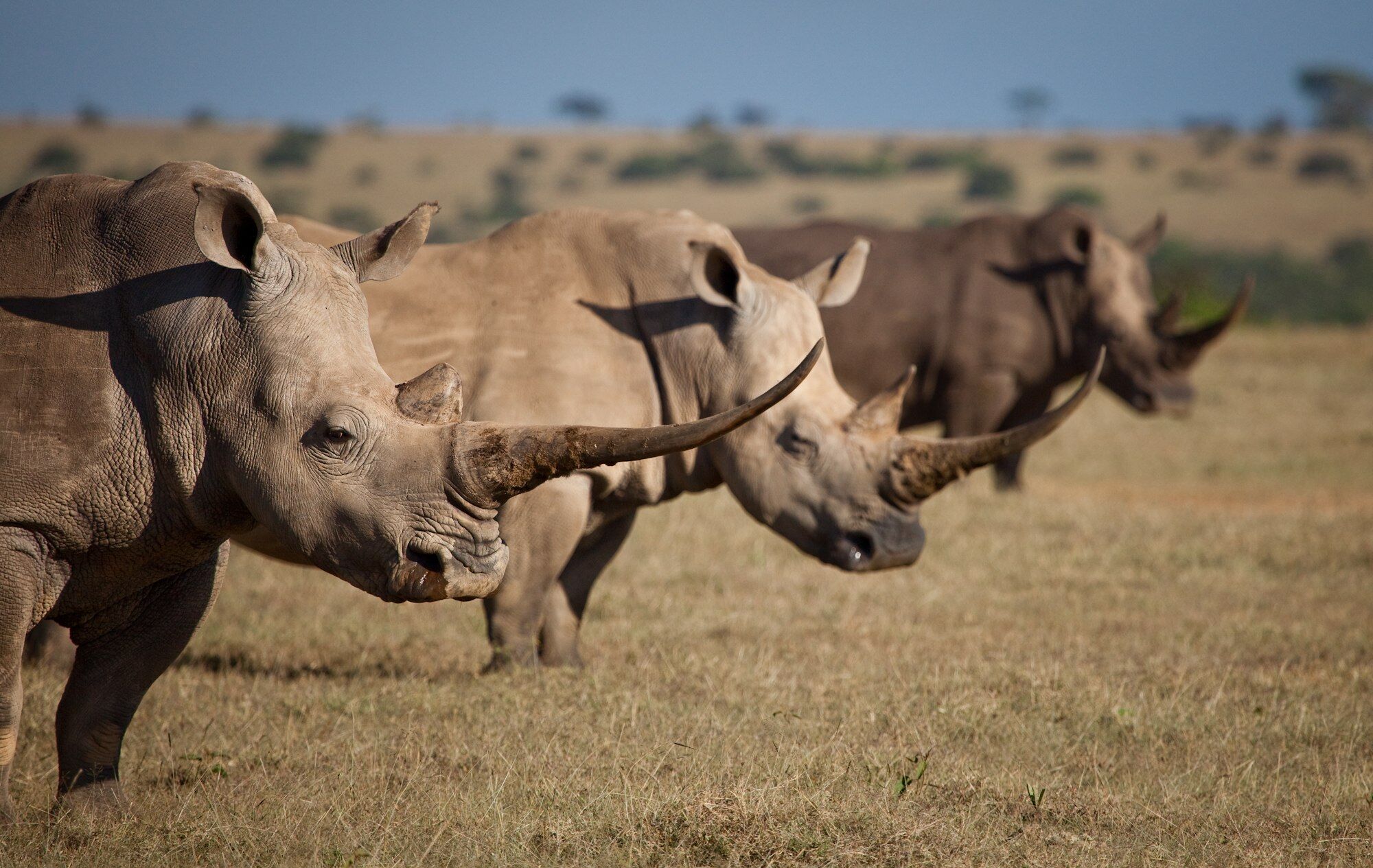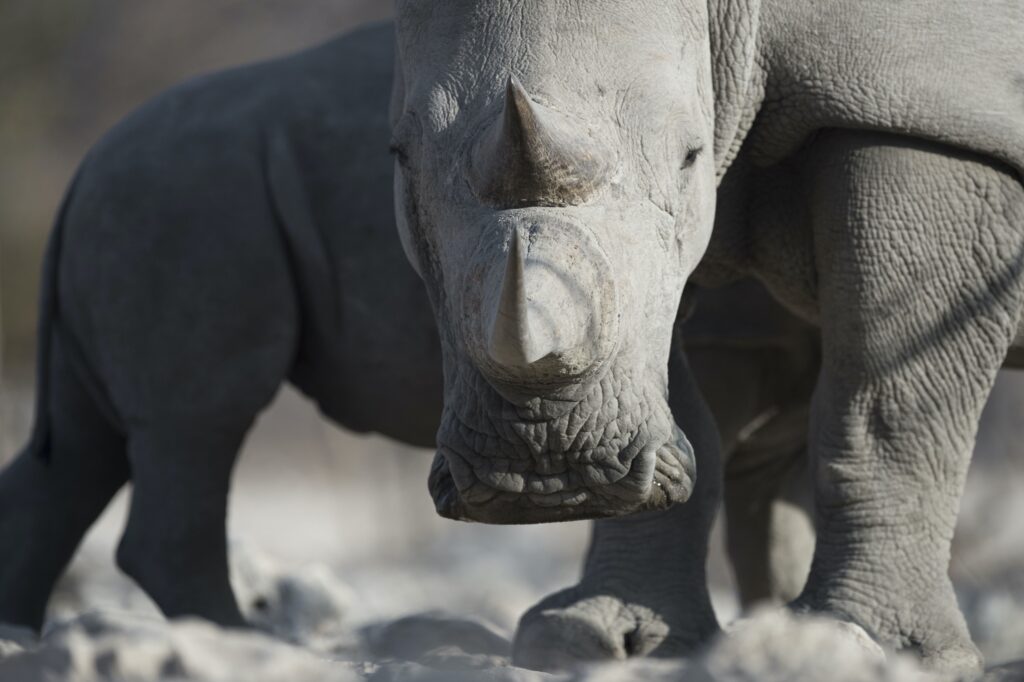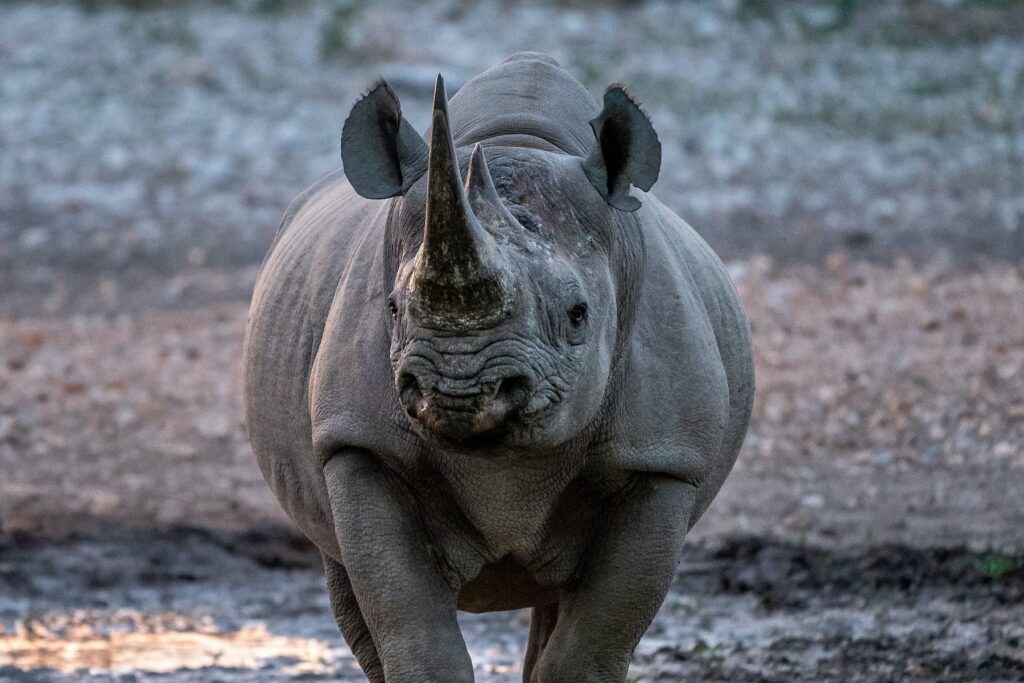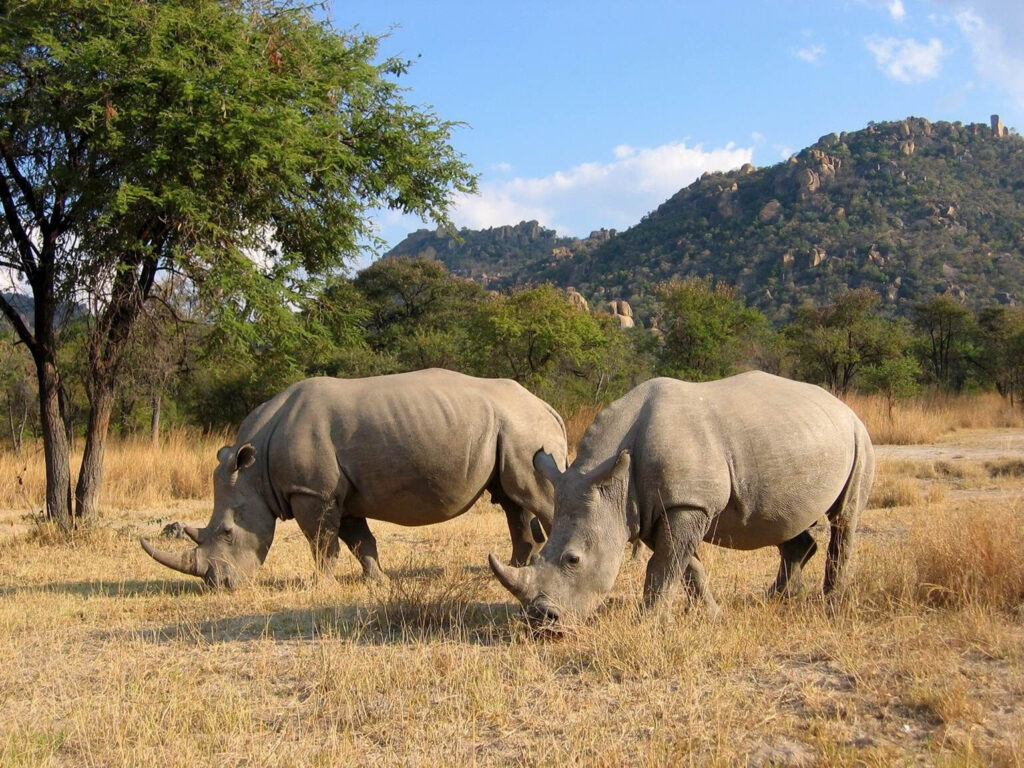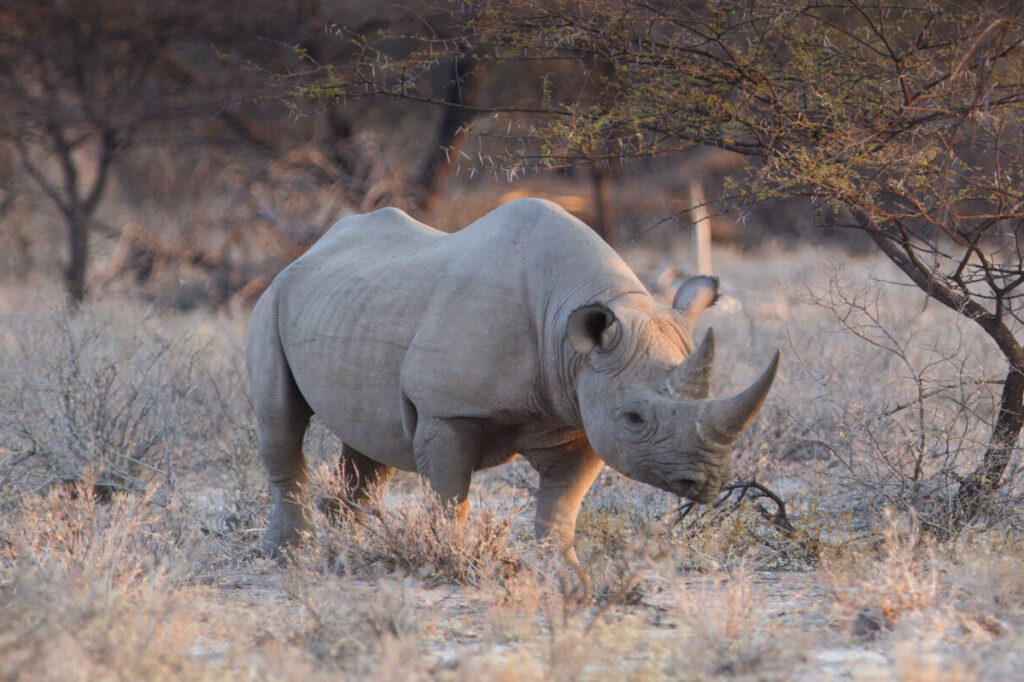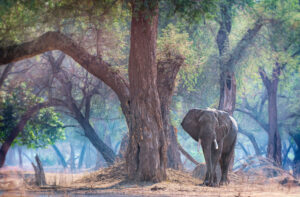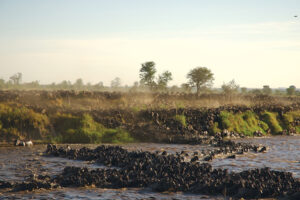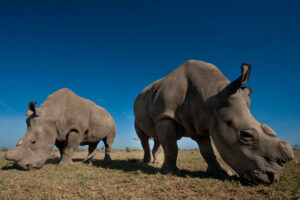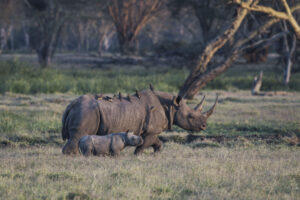
“It makes no difference if you’re black or white,” goes the popular song. An admirable sentiment when it comes to humanity, perhaps, but rather less helpful when applied to rhinoceroses. Africa’s two rhino species are very different indeed, both in appearance and behaviour. But how do you tell them apart?
First up, forget about colour. Neither the black nor the white rhino is ever either black or white. Both species are essentially grey, the precise tone varying from dark slate through to earthy yellowish, according to the soil in which they have most recently been wallowing.
The origin of these names is unclear. One theory holds that ‘white’ is a corruption of the Dutch wijd, coined by early settlers to describe the ‘wide’ muzzle of the white rhino, adapted for grazing. Thus, the other species, which is a browser and has a hooked upper lip to pluck foliage, was dubbed ‘black’ by way of contrast. Today, ‘square-lipped’ and ‘hook-lipped’ are sometimes used as alternatives, but white and black rhino remain standard usage.
These signature muzzles are certainly a better tool than colour with which to distinguish the two species. Indeed, the broad muzzle of the white rhino has the widest spaced nostrils of any mammal. But this is little help if you can’t see the animals’ heads – which, in long grass or thick bush is not uncommon.
Size is another distinguishing factor. The white rhino (Ceratotherium simum) is much the larger of the two. Indeed, at an average 2000–2,300kg and exceptionally topping 3,500kg, a bull is the world’s biggest land mammal after the three species of elephants. The black rhino (Diceros bicornis), by contrast, averages a ‘mere’ 800–1400kg. But size can also be hard to determine in the field. You’re unlikely to see the two animals standing side by side – and, of course, a young white rhino can be smaller than a large adult black rhino.
Both species have impressive horns, averaging up to 60cm for the white rhino and 50cm for the black, and sometimes exceeding 120cm in both species. In the black rhino, unlike the white, the second horn is sometimes longer than the first. Today, however, any rhinos you see of either species may have had their horns removed for their own security.
In general, the most reliable distinction is in overall shape and stance. A white rhino has a huge head, invariably held low to the ground as it crops the grass. Its profile also shows a pronounced shoulder hump and a fin-like ridge on the lower back. The black rhino has a much smaller head, invariably held upright, and a horse-like dip, or ‘saddle’, to its back. It generally appears less massive and more alert than its larger relative.
Habitat also offers clues, with the difference in the animals’ diets dictating where you are likely to find them. White rhinos prefer open, savannah woodland, where they graze regular lawns, playing an important ecological role in keeping grassland free from bush encroachment. Black rhinos prefer denser thickets, where they browse on a variety of woody plants, including some – such as euphorbias – that are toxic to other animals.
This dietary differentiation is evident in rhinos’ droppings, which they pile up in prominent middens around their territories. White rhino dung is clearly composed of grass, and resembles lumpy balls of lawn-mower trimmings. Black rhino dung is full of twigs and woody matter, with each twig snipped off at a tell-tale 45° angle by the slanted cheek teeth. Furrows in these middens show where the territory’s owner has scraped its back feet to spread a scent along the trail.
On safari, encounters with white and black rhinos are typically very different experiences. White rhinos, though much the rarer of the two just a century ago, are today considerably more numerous. Some 17,000 are now found across southern and east Africa, the majority in South Africa, but also reintroduced to parks in Namibia, Botswana, Zimbabwe, Zambia and Kenya. Finding them in these destinations is not usually difficult: they are often seen feeding in the open or slumped at a favourite wallow, and can be approached quite close – even on foot.
Black rhinos present a greater challenge. For a start, there are far fewer – just 5,500 across Africa, a shocking decline from the hundreds of thousands that roamed the continent just a century ago. And even in their few remaining haunts – notably the Serengeti/Masai Mara, Namibia’s Etosha and Damaraland, and South Africa’s Kruger and KwaZulu-Natal parks – they are shy and elusive, generally sticking to cover and emerging at dusk. Sightings in a vehicle are often brief. And sightings on foot can be hair-raising, as this notoriously jumpy animal is prone to charging at any perceived threat – though just as likely to run in the other direction.
Either way, seeing either rhino in any circumstances should be regarded as a great privilege. These extraordinary beasts are descended from ancestors in the Eocene period, around 50 million years ago. However misleading their names, they deserve our attention and respect.
Find out more about where to see white rhinos and black rhinos on the Expert Africa website, or get in touch with us to plan that rhino-spotting African adventure.
